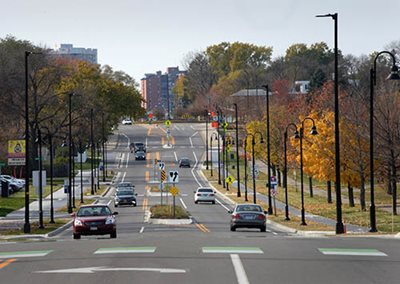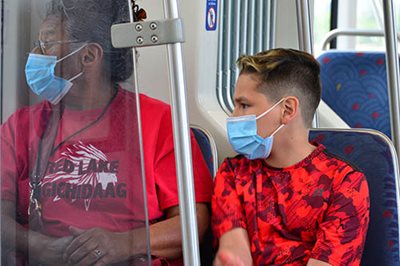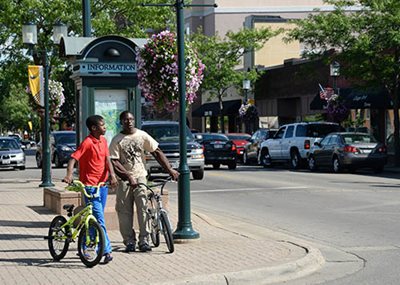 The Metropolitan Council has approved an update to the region’s 2040 Transportation Policy Plan. The plan provides a framework for how our region will support the ways people travel around the region as we plan for future growth. The 2020 update to the plan also addresses trends that have emerged since the plan was last updated in 2018.
The Metropolitan Council has approved an update to the region’s 2040 Transportation Policy Plan. The plan provides a framework for how our region will support the ways people travel around the region as we plan for future growth. The 2020 update to the plan also addresses trends that have emerged since the plan was last updated in 2018.
“This minor update sets the stage with studies and analyses that will inform the region’s next big planning effort, the 2050 regional development guide,” said Council Member Deb Barber, Transportation Committee Chair.
“We’ve already started building the framework for that guide and the Transportation Policy Plan is a core component. Regional planning hinges on the interconnectedness of transportation with land use, water supply, parks, and housing,” she said. “This update will inform conversations with local governments, community partners and the people of the region with valuable transportation data and analysis.”
The Met Council’s approval on November 18 marks the end of a year-long process, involving stakeholder meetings with technical staff, policymakers, and people across the region.
The Transportation Policy Plan contains detailed information about the region’s transportation system, including highways, transit, and bicycle and pedestrian infrastructure. The plan also addresses regional freight movement and airports. It identifies policies for maintaining, managing, and improving the region’s transportation system. Those policies guide the investment plans for each aspect of the system. The plan is required by the federal government and must be updated every five years.

The COVID-19 (coronavirus) outbreak
The COVID-19 outbreak has had and will continue to have significant impacts on the regional transportation system and its funding streams. While this update does not fully address these changes, it does plan for future analysis to fully understand the effects. The update includes a commitment to studies that will analyze, account for, and help predict the long-term impacts of COVID-19; as well as inequities found in communities across the region.
Highlights of the 2020 update
-
Addressing key challenges and opportunities in transportation, including:
-
Results from recent transportation planning studies, like the Freeway System Interchange study and the Travel Behavior Inventory household survey
-
Interactive tools like on-line mapping to help assess industrial land options and prioritize sites for future development; and scenario-building applications for land use and transportation planning to reduce greenhouse gas emissions.

Public comment further draws out equity, climate and investment priorities
During the public comment period, over 200 commenters participated, including individuals and representatives of organizations — local governments and nonprofit organizations — logging 419 comments.
Equity
Planning for transportation is an opportunity to recognize inequity in the system, heal past harms, and bring residents into the process. Equity calls for focusing on the needs of those who are most impacted by decisions, like communities of color and those who have low incomes. In order to keep connected with these and other communities, engagement must be an ongoing conversation throughout planning processes to continue learning about their needs, concerns and recommendations, and focus on improvements.
Climate change
The region will consider air pollutant and greenhouse gas emission information as it makes investments with a target of helping to reduce transportation impacts. This plan places a renewed focus on all transportation-related emissions. Carbon monoxide, air pollutants like ozone and particulate matter continue to affect the health of people in the region. Additionally, transportation accounts for one quarter of statewide greenhouse gas emissions, contributing to global climate change.
Investment priorities
These priorities are driven by the goals and strategies laid out in the plan. The region has a goal to increase the number and share of trips taken by carpool, transit, bicycling, and walking. This includes shared mobility options and mobility as a service; rapid technology changes; expansion of infrastructure like regional transitways, MnPASS, and regional bikeways; and expanded interest in remote work. This plan underscores considering all of these travel options to improve how the transportation network best serves people living in the region.
Future planning for a growing region
The long-range nature of the Transportation Policy Plan keeps the work focused forward. That bears out most meaningfully in the Work Program, Chapter 14. A series of previously planned and new transportation studies will address the key issues brought forward during the public comment as well as the key challenges and opportunities highlighted above.
The results of these studies move transportation planning toward the next milestone, the 2050 planning horizon.
“As with any planning process, the goals and strategies, and challenges and opportunities found in this plan remain dynamic,” said Nick Thompson, Director of Transportation Services at Met Council. “As staff move ahead, gathering input into this next planning horizon, these elements will continue to be adapted and adjusted.”
See the updated 2040 Transportation Policy Plan